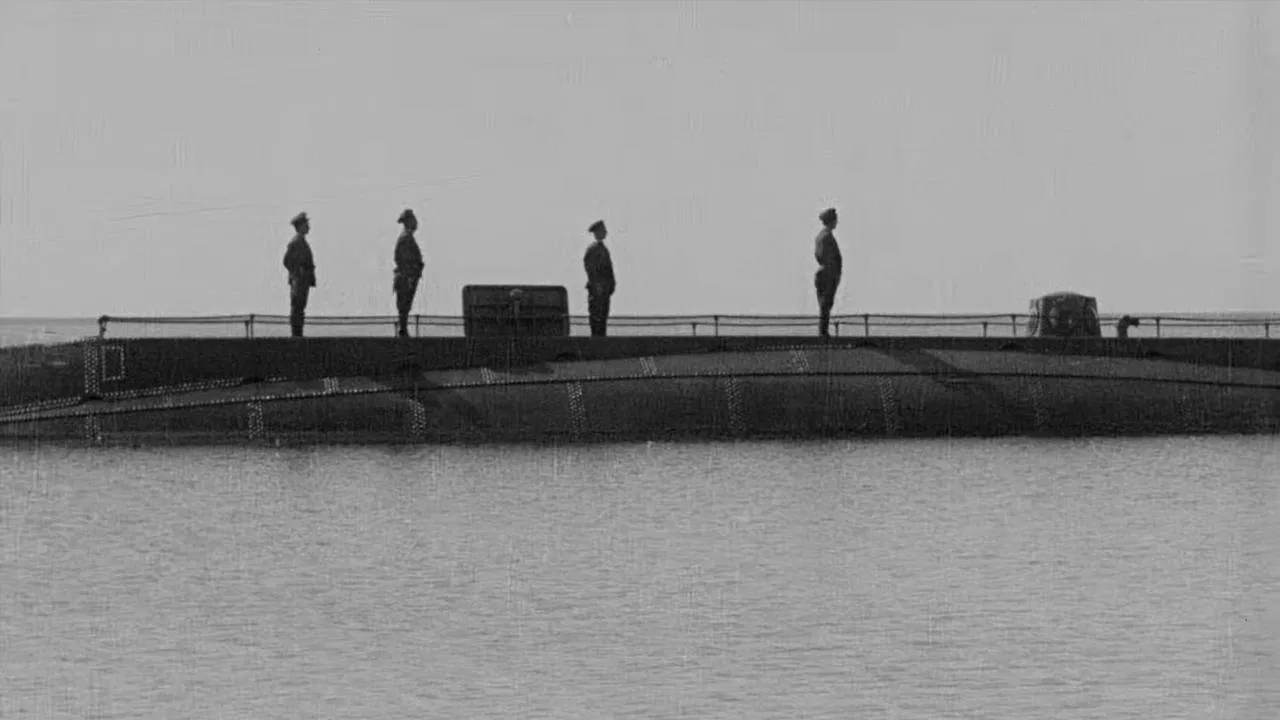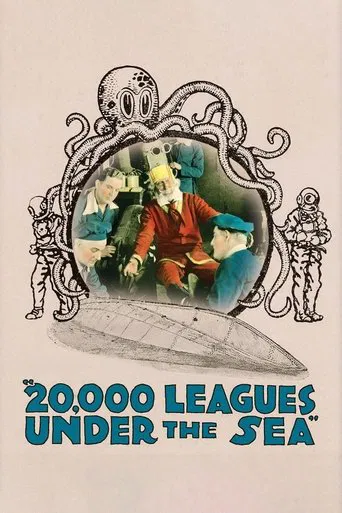


This screen adaptation of Jules Verne's novel seems to have been timely. Two recent innovations changed the story's relevancy. The film was released in 1916, when German U-Boats were showing the effectiveness of submarines in war, including the sinking of the Lusitania. Verne's science fiction had only recently become more fully realized. Additionally, deep sea travelling was to be exploited by science. Indeed, some of the best sequences in this film are just of fish and sharks in the marine gardens as the characters look through Captain Nemo's magic window. Another invention, the motion-picture underwater photography by the Williamson brothers allowed for Verne's fiction to be more fittingly portrayed with cinema. Certainly, this was a remarkable effect for the art form in 1916, and I think the underwater scenes remain the best parts of this film, with the exception of the cheesy octopus attack.Above water, the plot is plodding and confused. Unfortunately, the filmmakers tried to combine Verne's "Twenty Thousand Leagues Under the Sea" with his sequel to it, "The Mysterious Island". Consequently, through most of the photoplay, there are two parallel narratives loosely and convolutedly connected. Nemo is also transformed into a dark-skinned Muslim and his vengeful mission is changed, and a lengthy and foolish epilogue is added to make sense of the hodgepodge. The science-fiction parts faithful to the title novel are superior to and mix poorly with the added-on exoticism. In addition, the acting is dated. On the other hand, the shots of fish, sharks, the submarine and the diving suits are straightforward and retain interest especially due to the age and precedence.
... View MoreMonday November 2, 7pm, The Paramount, Seattle "Slowly, silently, it rises from unfathomable depths." A French scientist leads an expedition sent to find and destroy a gigantic, menacing sea monster. He discovers instead a dark, vengeful anti-hero that controls the "monster" and complications ensue.The third motion picture (American Mutoscope & Biograph 1905, Georges Méliès 1907) based on Jules Verne's Vingt Mille Lieues sous Les Mers from his legendary Voyages Extraordiniares, Universal Film Mfg. Co's 20,000 Leagues Under the Sea (1916) is noteworthy for the technically astonishing underwater photography of John Ernest Williamson's Submarine Film Corporation. Produced by Carl Laemmle over a two-year period in the Bahamas, at Universal's Leonia, New Jersey and Universal City, California facilities, for a reported cost of $500,000 (roughly $100,000,000 today), the screenplay also incorporated elements of Verne's Mysterious Island. The technology of Williamson's "Photosphere" observation chamber, used to film encounters with undersea creatures, rivals the fictional science of Verne's novel and helped establish the fantasy-horror legacy of Universal Studios.
... View MoreThis may have been thrilling in 1916, but today it seems more of a curio. The Williamson brothers invented a camera to take pictures underwater, (the prologue tells us, complete with photos of them) so there's lots of shots of fish swimming, the bottom of the sea, men in diving suits and one battle with an octopus, which was a bit fuzzy. Still, the sense of watching movie history was strong, but don't expect too much in light of more modern techniques. What really bothered me was the hammy acting styles, with lots of arm motions and exaggerated facial features. It's the style that gave silent films a bad name. One who avoided this was Matt Moore, the hero of the film, and the only actor I recognized. Perhaps that is why he was still making movies in the 50's. The film uses plot elements of Verne's "The Mysterious Island" as well as "Twenty Thousand Leagues Under the Sea."
... View MoreMy first exposure to 20,000 Leagues, was as a kid in the late 50's at the Colony Theatre in Chicago. This was the Walt Disney version.I have since purchased the 1916 silent version. I have to commend the movie-makers for a very well-done attempt at filming such a difficult story. The surface shots of the Nautilus looked very much like the vintage 1900's submarine, "Holland". The interior shots were, of course, stage sets. I have to comment however, on the helm-wheel-- the prop guys forgot to tighten it down!!! Also too, the first (as far as I know) underwater shots were very well done-- remarkable for the times. If anyone at all is familiar with 20,000 Leagues, and has not seen this silent version, by all means, see it--and buy it!!! One last thing--- being an avid theatre organ buff, I only wish the music was tracked in organ-- perhaps by Gaylord Carter or Lee Irwin.Thank you. Your's, Rick
... View More